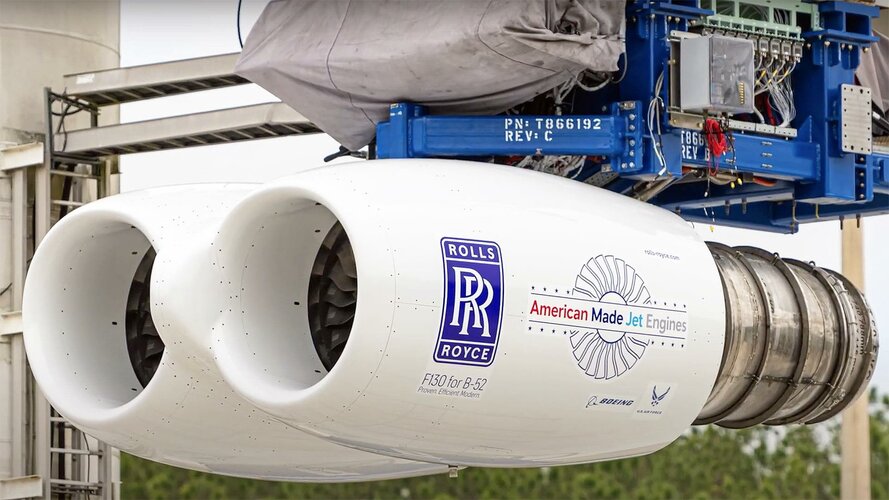You couldn't just start two and then use the air from them to turnover the others? Isn't that how it is done with the air carts? Or is that in an alert status you just fire everything up at once to save time and for redundancy?Eight, one for each engine. Back in the day I argued a safety plan that individual engine starts were just as safe as all wight at once.Just two each planeStill, starting 700 Buffs with 8 cartridges each, rinse, repeat - the cartridge manufacturer must have made a crapton of money on this.
But the poor guys who have to clean them afterwards were not to be envied.
You are using an out of date browser. It may not display this or other websites correctly.
You should upgrade or use an alternative browser.
You should upgrade or use an alternative browser.
Boeing B-52J / B-52 Re-Engining
I know the ejector is there; I just meant the standard crew was already down to 5 not 6. Who is the other rear facing station besides the old tail gunner seat?The Gunner seat is still there so there are 6 ejection seats. The in cabin equipment is there as well, just all of it is pulled and collared. The stuff in the tail is gone. As mentioned most of the OAS is downstairs so it really doesn’t make sense to run the cables and completely reengineer the upstairs.Crew is already down to 5; tailgunner removed long ago. That said sometimes extra crew is carried anyway and apparently it can fly with as little as three if absolutely needed. New version will bring standard crew down to four, but it isn't clear which positions. A poster who's actually had service on the machine said that it would be incredibly difficult to move the lower deck stations; I think it likely the position that is removed is aft facing upper deck (along with the previous gunner station).
You can, but that’s not how the Dash One is written. That by the way was the issue with the Test Safety Office. Sanity prevailed, we did the test one at a time without a low risk assessment.You couldn't just start two and then use the air from them to turnover the others? Isn't that how it is done with the air carts? Or is that in an alert status you just fire everything up at once to save time and for redundancy?
EWOI know the ejector is there; I just meant the standard crew was already down to 5 not 6. Who is the other rear facing station besides the old tail gunner seat?
_Del_
I really should change my personal text... Or not.
- Joined
- 4 January 2012
- Messages
- 1,315
- Reaction score
- 1,812
Eight, one for each engine. Back in the day I argued a safety plan that individual engine starts were just as safe as all wight at once.Just two each planeBut the poor guys who have to clean them afterwards were not to be envied.
Shows what I know. I assumed they started the inboards and used those to turn the others.
Not a got you, I just remember that one pretty well after the back and forth with Test Safety to go do the cold weather tests for the F-T synthetic fuel. The videos are probably still up somewhere if anyone wanted to go see footage of a test where I was actually in the jet as the test conductor. It was 10 below and the thing that stuck out to me was that the snow didn’t melt into muddy puddles on the deck until all engines were started and we turned on the heat.Eight, one for each engine. Back in the day I argued a safety plan that individual engine starts were just as safe as all wight at once.Just two each planeBut the poor guys who have to clean them afterwards were not to be envied.
Shows what I know. I assumed they started the inboards and used those to turn the others.
Thanks. Quick off topic question, if it is open source information. What would be a typical cruising altitude for a B-52H with a typical payload? Wiki lists the ceiling as 50,000 feet but I assume that is payload/drag dependent. I think in another post on another thread you mentioned that a B-52 (perhaps a NASA test platform?) used for the X-51 was at its limit to get up to 49,000 feet with the X-51 stack. I am specifically thinking about the HACM program and the fact that the F-15 is slated to be the first carrier; I was wondering perhaps if the aircraft is expected to bring it to an altitude and speed that a B-52 wouldn't reach if there were more than a couple carried. If it's a sensitive subject, no worries.EWOI know the ejector is there; I just meant the standard crew was already down to 5 not 6. Who is the other rear facing station besides the old tail gunner seat?
@Josh_TN No worries, it’s not sensitive and the general answer you already know, “It depends.” The Dash One is floating out there on the interwebs, so you can go to the good book and get the exact answers. Basically, the jet is perfectly happy in the 30’s and the TF33’s on the H start to run out of thrust in the 40’s, the old J57’s did alright in the thin air. They were also lighter jets. The 50 kft limit is more Air Force regs than a aircraft limit. That said, in national airspace 30 kft is often the limit as the current jets aren’t RVSM. One of the potentially nice things about the new clean nose is that they might be able to do RVSM, if they spend the money.Thanks. Quick off topic question, if it is open source information. What would be a typical cruising altitude for a B-52H with a typical payload? Wiki lists the ceiling as 50,000 feet but I assume that is payload/drag dependent. I think in another post on another thread you mentioned that a B-52 (perhaps a NASA test platform?) used for the X-51 was at its limit to get up to 49,000 feet with the X-51 stack. I am specifically thinking about the HACM program and the fact that the F-15 is slated to be the first carrier; I was wondering perhaps if the aircraft is expected to bring it to an altitude and speed that a B-52 wouldn't reach if there were more than a couple carried. If it's a sensitive subject, no worries.
I did do the test planning for X-51 and the lack of thrust drove them to take off with almost bingo gas and land with close to minimum fuel for structural integrity. The new F130’s power G’s up above 50 kft, so the new engines and clean nose might give back a bit of performance in the 40’s. Above 42 kft everyone will be pressure breathing which isn’t the most comfortable for long periods of time.
Edit: Forgot to mention the clean nose gets the Mach number. Back up to .92 which also gives a bit more margin up in the coffin corner.
Last edited:
Details on vertical separation and Reduced Vertical Separation Minima:

Compliance begins at 29000ft. RVSM requires:
Generally a doublet of GPS coupled INS system is also required on most RVSM routes such the ones crossing the Atlantic.
 www.skybrary.aero
www.skybrary.aero
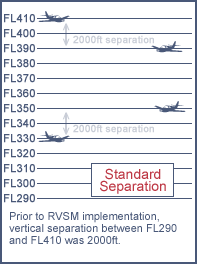
Compliance begins at 29000ft. RVSM requires:
1. Two independent altitude measurement systems;
2. An altitude alerting system;
3. An automatic altitude control system; and
A secondary surveillance radar (SSR) transponder with altitude reporting system that can be connected to the altitude measurement system in use for altitude keeping.
Generally a doublet of GPS coupled INS system is also required on most RVSM routes such the ones crossing the Atlantic.
Reduced Vertical Separation Minima (RVSM) | SKYbrary Aviation Safety
Description A program was initiated by ICAO in 1982 involving worldwide studies to assess the feasibility of a reduction of the Vertical Separation Minima (VSM) above FL290 from 2,000 feet to 1,000 feet. The principal benefits which the implementation of the reduced VSM were expected to provide...
Last edited:
aonestudio
I really should change my personal text
- Joined
- 11 March 2018
- Messages
- 2,964
- Reaction score
- 7,493
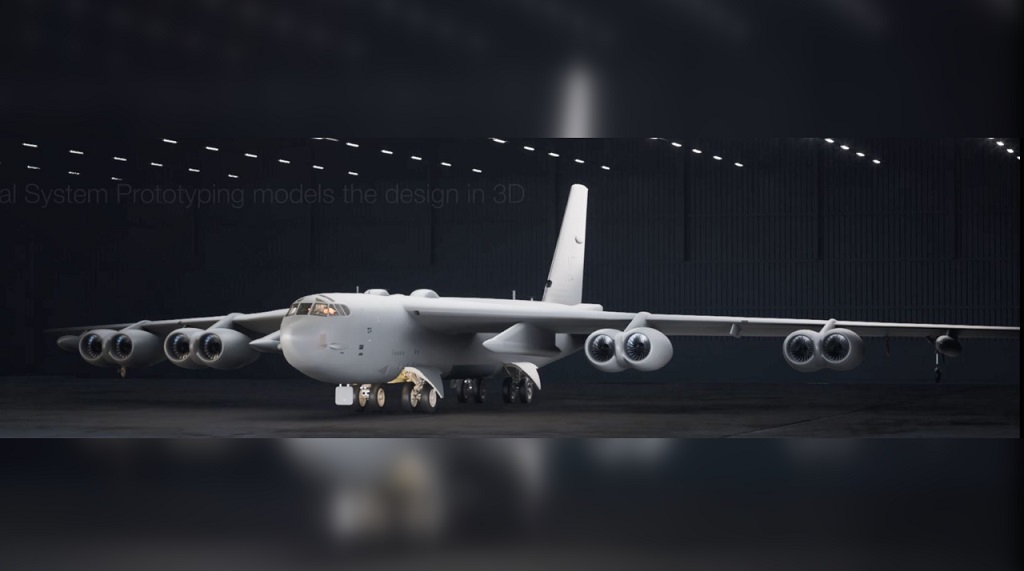
Let's Talk About The New Images That Show What The Upgraded B-52 Will Look Like
Even if the first flight of the upgraded bomber is still years away, we now know how it will look like after the largest modification program in its
FighterJock
ACCESS: Above Top Secret
- Joined
- 29 October 2007
- Messages
- 5,608
- Reaction score
- 5,937

Let's Talk About The New Images That Show What The Upgraded B-52 Will Look Like
Even if the first flight of the upgraded bomber is still years away, we now know how it will look like after the largest modification program in itstheaviationist.com
Having just looked at the article I like the look of the modified cockpit, though I would have thought that in this day and age Boeing would have put more multifunctional displays instead of two (but that is just me).
- Joined
- 9 October 2009
- Messages
- 21,976
- Reaction score
- 13,636
Penny-pinching yet again, I suspect.
There might be an issue with linking a digital system to all the analog systems of the B-52. A lot of it simply can't be digitized - if you want to know the tire pressure, you get out a gauge and walk to ever tire. So it may be the case that more screens aren't useful, in the cockpit at least. I haven't seen what the new nav/bomb positions look like; presumably those are a lot more digitized since they would largely be dealing with updated avionics.
Let's Talk About The New Images That Show What The Upgraded B-52 Will Look Like
Even if the first flight of the upgraded bomber is still years away, we now know how it will look like after the largest modification program in itstheaviationist.com
Having just looked at the article I like the look of the modified cockpit, though I would have thought that in this day and age Boeing would have put more multifunctional displays instead of two (but that is just me).
- Joined
- 3 June 2006
- Messages
- 3,094
- Reaction score
- 3,964
Edit: The tweet about problems in this B-52 re-engine program and a possible cancellation was deleted. Sorry for any confusion and inconvenience.
View: https://twitter.com/space_osint/status/1597684576943771650?t=jRownRM9RyhTQFT37-Vpxg&s=19
View: https://twitter.com/space_osint/status/1597867295225049088?t=kTeveKGwCo2pgwGzhqqtOA&s=19
View: https://twitter.com/space_osint/status/1597684576943771650?t=jRownRM9RyhTQFT37-Vpxg&s=19
View: https://twitter.com/space_osint/status/1597867295225049088?t=kTeveKGwCo2pgwGzhqqtOA&s=19
Last edited:
totallyaverage
I really should change my personal text
- Joined
- 15 April 2018
- Messages
- 68
- Reaction score
- 148
isayyo2
Lurker alert
- Joined
- 24 November 2011
- Messages
- 1,131
- Reaction score
- 2,331
Someone shorting Rolls Royce or Boeing for a quick buckOK, that's really weird. Why fake a document like that?
- Joined
- 21 January 2015
- Messages
- 12,154
- Reaction score
- 16,366
I’d hope there would be some kind of investigation on that.Someone shorting Rolls Royce or Boeing for a quick buckOK, that's really weird. Why fake a document like that?
- Joined
- 17 October 2006
- Messages
- 2,393
- Reaction score
- 1,197
Indeed. Hard to see any return (no, would not shake the stock price) and a lot of trouble for any insider doing it. But Insinna's pretty sound.OK, that's really weird. Why fake a document like that?
- Joined
- 9 October 2009
- Messages
- 21,976
- Reaction score
- 13,636
U.S. Pushes to Keep B-52 Bombers Going as Pressure From China Grows
Air Force and aerospace suppliers are looking to upgrade the vintage fleet as newer systems take years to come online.
It's not called the 98% Journal!Is every Wall Street Journal piece behind a paywall?
John21
ACCESS: Confidential
- Joined
- 27 May 2007
- Messages
- 150
- Reaction score
- 15
Use the private function on a phone/tablet, incognito mode, or possibly internet archive may have it. I believe Reddit helps a lot for finding non-paywalled versions.Is every Wall Street Journal piece behind a paywall?
- Joined
- 21 April 2009
- Messages
- 13,757
- Reaction score
- 7,697
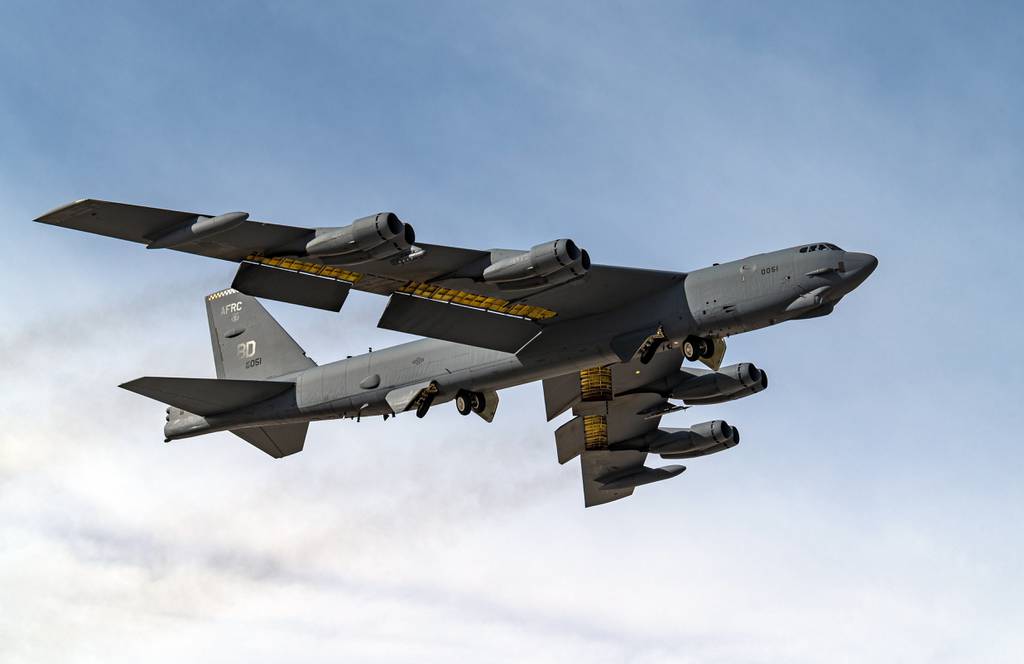
How to re-engine a B-52 and make a new bomber fleet
Defense News recently interviewed Brig. Gen. William Rogers, the program executive officer for the Bombers Directorate with the U.S. Air Force.
- Joined
- 23 August 2011
- Messages
- 1,611
- Reaction score
- 4,772
Some developments...
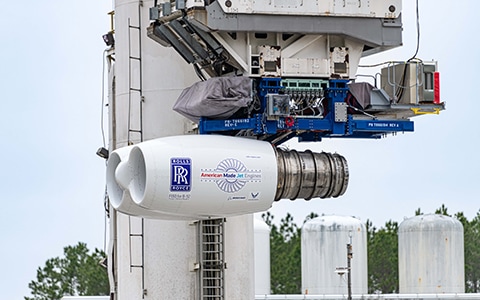
 www.rolls-royce.com
www.rolls-royce.com
View: https://www.youtube.com/watch?v=tEcpbIa0kl0

Rolls-Royce has begun testing F130 engines for the United States Air Force B-52 fleet at the NASA Stennis Space Center. F130 engines were selected to replace existing engines as part of the B-52 modernization program, with over 600 engine deliveries
Rolls-Royce has begun testing F130 engines for the United States Air Force B-52 fleet at the NASA Stennis Space Center. F130 engines were selected to replace existing engines as part of the B-52 modernization program, with over 600 engine deliveries expected.
Last edited by a moderator:
NeilChapman
Interested 3rd party
- Joined
- 14 December 2015
- Messages
- 1,317
- Reaction score
- 547

100 Years In Combat! US Air Force Is Upgrading Its B-52s To Stay In Service Till 2050 Despite New Bombers Joining In
US Air Force's B-52 bombers are undergoing the biggest upgrade of its life, which will enable it to fly missions till at least 2050 and complete a record-breaking century in service.
 eurasiantimes.com
eurasiantimes.com
"The Air Force anticipates that the first B-52s will receive new engines in 2026–2027, with initial operational capability coming in 2030."
IOC in 2030?!? That's seven years for one squadron to be upgraded with existing technology - integration only. That's ridiculous.
How come every program associated with Boeing always has complications, cost overruns, or calendars pushed out?
Someone needs to herd these cats and figure out what's necessary to have IOC in 2027.
FighterJock
ACCESS: Above Top Secret
- Joined
- 29 October 2007
- Messages
- 5,608
- Reaction score
- 5,937

100 Years In Combat! US Air Force Is Upgrading Its B-52s To Stay In Service Till 2050 Despite New Bombers Joining In
US Air Force's B-52 bombers are undergoing the biggest upgrade of its life, which will enable it to fly missions till at least 2050 and complete a record-breaking century in service.eurasiantimes.com
"The Air Force anticipates that the first B-52s will receive new engines in 2026–2027, with initial operational capability coming in 2030."
IOC in 2030?!? That's seven years for one squadron to be upgraded with existing technology - integration only. That's ridiculous.
How come every program associated with Boeing always has complications, cost overruns, or calendars pushed out?
Someone needs to herd these cats and figure out what's necessary to have IOC in 2027.
View: https://youtu.be/m_MaJDK3VNE
Not again! After all the problems with the KC-46 Boeing has now messed up it’s re-engining of the B-52 as well.
Pretty sure it's Rolls-Royce, not Boeing, that's handling the bulk of the re-engining program. They're the ones that won the multi-billion dollar contract for it, not Boeing. Boeing is almost certainly involved, yes, but they aren't the main drivers for this contract.
Besides, I don't think this is even a delay. You have to remember, in order to not reduce the availability of the B-52 fleet they are only doing the engine upgrades when a particular B-52 goes into scheduled depot level maintenance. They are not pulling B-52 out of line service to get new engines even if it means it takes longer to fully upgrade the fleet.
Besides, I don't think this is even a delay. You have to remember, in order to not reduce the availability of the B-52 fleet they are only doing the engine upgrades when a particular B-52 goes into scheduled depot level maintenance. They are not pulling B-52 out of line service to get new engines even if it means it takes longer to fully upgrade the fleet.
NeilChapman
Interested 3rd party
- Joined
- 14 December 2015
- Messages
- 1,317
- Reaction score
- 547
Pretty sure it's Rolls-Royce, not Boeing, that's handling the bulk of the re-engining program. They're the ones that won the multi-billion dollar contract for it, not Boeing. Boeing is almost certainly involved, yes, but they aren't the main drivers for this contract.
Besides, I don't think this is even a delay. You have to remember, in order to not reduce the availability of the B-52 fleet they are only doing the engine upgrades when a particular B-52 goes into scheduled depot level maintenance. They are not pulling B-52 out of line service to get new engines even if it means it takes longer to fully upgrade the fleet.

Rolls-Royce Offers Peek At The B-52’s New Engines Undergoing Testing
The B-52 re-engining saga goes back many decades, but it's finally happening in the form of Rolls-Royce's TF130 turbofan.
"Boeing, the prime contractor for the B-52, is overseeing the engine integration and the aircraft’s overall modernization program."
My point is the BUFFs need new engines yesterday. There has been a step change in the global security situation in the last two years. Someone needs to accelerate this program in any way possible - with the understanding that there will be a delay. Boeing can't help themselves.
Also these are Bizjet engines, a good order would be 10 engines. So some of the delay is probably time for RR to ramp up production. The old engines are still going, so a steady rate of fit, is fine.Pretty sure it's Rolls-Royce, not Boeing, that's handling the bulk of the re-engining program. They're the ones that won the multi-billion dollar contract for it, not Boeing. Boeing is almost certainly involved, yes, but they aren't the main drivers for this contract.
Besides, I don't think this is even a delay. You have to remember, in order to not reduce the availability of the B-52 fleet they are only doing the engine upgrades when a particular B-52 goes into scheduled depot level maintenance. They are not pulling B-52 out of line service to get new engines even if it means it takes longer to fully upgrade the fleet.
Yes of course Boeing is deeply involved in this program, they still own the B-52. But they still didn't get the largest contract for the re-engining program in particular. It's Rolls Royce that's doing a good chunk of the work now. Hence why the engine testing is being done by them.Pretty sure it's Rolls-Royce, not Boeing, that's handling the bulk of the re-engining program. They're the ones that won the multi-billion dollar contract for it, not Boeing. Boeing is almost certainly involved, yes, but they aren't the main drivers for this contract.
Besides, I don't think this is even a delay. You have to remember, in order to not reduce the availability of the B-52 fleet they are only doing the engine upgrades when a particular B-52 goes into scheduled depot level maintenance. They are not pulling B-52 out of line service to get new engines even if it means it takes longer to fully upgrade the fleet.
Rolls-Royce Offers Peek At The B-52’s New Engines Undergoing Testing
The B-52 re-engining saga goes back many decades, but it's finally happening in the form of Rolls-Royce's TF130 turbofan.www.thedrive.com
"Boeing, the prime contractor for the B-52, is overseeing the engine integration and the aircraft’s overall modernization program."
My point is the BUFFs need new engines yesterday. There has been a step change in the global security situation in the last two years. Someone needs to accelerate this program in any way possible - with the understanding that there will be a delay. Boeing can't help themselves.
The current B-52 fleet is still doing well on the current engines, and is more than fine staying on them for a few extra years so as not to hurt the fleet's availability. Availability rates are still good on the current engines. The reason for the engine switch is almost entirely because of projected issues with spares and maintenance costs in the future. Nothing about the current security environment demands the new engines as long as current engine availability remains roughly what it currently is, especially because the Air Force isn't replacing the engines for performance reasons and does not as far as I am aware plan on modifying B-52 operations as a result of the increased performance. They aren't planning on carrying larger loads, and the B-52 already has a range thousands of miles longer than the B-2. Why is getting the engines into the fleet faster more important than ensuring the B-52 fleet maintains as much combat availability as possible during this period of heightened tensions?
Edit: Let me put it more simply. The primary reason the re-engining program exists in the first place is because of concerns about future availability rates and maintenance costs. So what's the point of an upgrade timeline that reduces your availability for a number of years over doing it slower and not hurting availability rates much if at all (the point of the upgrade)?
Last edited:
HyFonic
ACCESS: Restricted
- Joined
- 5 March 2020
- Messages
- 43
- Reaction score
- 135
Can we get a RIP for the 'H'?

 www.airandspaceforces.com
www.airandspaceforces.com

It’s Official: The Re-Engined B-52 Will be the B-52J
As soon as they get new engines, B-52H bombers will be designated as B-52J aircraft, Air Force budget documents show.
jstar
ACCESS: Secret
- Joined
- 12 October 2007
- Messages
- 346
- Reaction score
- 425
"I" is almost never used as it is too easily confused with "1". Same with "O" and "0". https://en.wikipedia.org/wiki/1962_United_States_Tri-Service_aircraft_designation_system
See the section on "Series letter".
See the section on "Series letter".
Last edited:
Similar threads
-
USAF to Retire B-1, B-2 in Early 2030s as B-21 Comes On-Line
- Started by flateric
- Replies: 323
-
-
-
-

